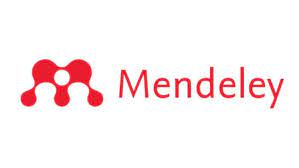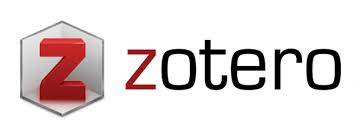PENGARUH CARA MEMASAK YANG BERBEDA TERHADAP KADAR PROTEIN, LEMAK, KOLESTEROL DAN RASA DAGING SAPI BALI
Abstract
The purpose of this study was to determine the effect of different cooking methods on protein content, fat, cholesterol and taste of Bali beef cattle. The research method used was Completely Randomized Design (RAL) with 4 treatments and 3 replications as follows: P1: Boiled Meat, P2: Steamed Meat, P3: Roasted Meat, P4: Fried Meat. The variables measured were protein content, fat content, cholesterol level, and taste. Data on protein, fat content, and cholesterol levels were analyzed using ANOVA followed by Duncan test. Taste data was analyzed by nonparametric Kruskal-Wallis Test. The result of this study showed that the treatment had a significant effect (P <0.01) on protein content, fat content, and taste of bali beef cattle but not significant (P> 0,05) on beef cholesterol level. It can be concluded that frying and roasting methods produced higher protein and fat content, with taste that tend to be very tasty. However, boiling and steaming methods resulted in lower protein and fat content, with a tendency to taste less tasty. Cholesterol content in each cooking process is relatively similar.
ABSTRAK
Tujuan dari penelitian ini adalah untuk mengetahui pengaruh cara memasak yang berbeda terhadap kadar protein, lemak, kolesterol dan rasa daging sapi Bali. Metode penelitian yang digunakan adalah Rancangan Acak Lengkap (RAL) dengan 4 perlakuan dan 3 ulangan. Perlakuan yang dikenakan adalah: P1: Daging Direbus, P2: Daging dikukus, P3: Daging dipanggang, P4: Daging digoreng. Variabel yang diukur adalah kadar protein, kadar lemak, kadar kolesterol, rasa. Data kadar protein, kadar lemak, dan kadar kolesterol dianalisis menggunakan ANOVA (SPSS) dilanjut dengan uji Duncan. Data rasa dianalisis menggunakan nonparametrik Kruskal-Wallis Test. Hasil penelitian ini menunjukkan bahwa perlakuan berpengaruh sangat nyata (P<0,01) terhadap kadar protein, kadar lemak dan rasa daging sapi Bali tetapi berpengaruh tidak nyata (P>0,05) terhadap kadar kolesterol daging sapi Bali. Metode penggorengan dan pemanggangan menghasilkan kandungan gizi protein dan lemak relatif tinggi dengan rasa yang cenderung sangat enak. Metode perebusan dan pengukusan menghasilkan kandungan protein dan lemak lebih rendah dengan rasa yang cenderung kurang enak. Kandungan kolesterol pada setiap proses pemasakan relatif sama.
Downloads
References
Christensen S.K., Dagenais N., Chory J., Weigel D. (2000). Regulation of auxin response by the protein kinase PINOID. Cell 100: 469–478
Colpo A. 2005. LDL cholesterol: bad cholesterol or science cholesterol. Journal of American physicians and surgeons. 10 (3):83-89.
Damayanthi E. 1994. Pengaruh Pengolahan terhadap Zat Gizi Bahan Pangan.
Jurusan Gizi Masyarakat dan Sumberdaya Keluarga. Institut Pertanian Bogor. 35.
Deddy, Nurhaeni SP. 1992. Metoda Kimia Biokimia dan Biologi dalam Evaluasi Nilai Gizi Pangan Olahan. Departemen Pendidikan dan Kebudayaan Direktorat Jenderal Pendidikan Tinggi Pusat Antar Universitas Pangan dan Gizi Institut Pertanian Bogor. 119-121.
Forrest GJ, Aberle HB, Hendrick MD, Judge, Merkel RA. 1975. Principles of Meat Science. WH. Freeman and Company, San
Gujral HS, Kaur A, Singh N, Sodhi NS. 2002. Effect of liquid whole egg, fat and textured soy protein on the textural and cooking properties of raw and baked patties from goat meat : Jurnal of Food Engineering. 53 (4) : 377-385.
Gamble MH, Rice P. 1987. Effect of Initial Tuber Solids Content on Final Oil Content of Potato Chips. Lebensm-Wiss. u. Technology. 21 : 62-65.
Harris R.S Karmas E. 1999. Evaluasi Gizi pada Pengolahan Bahan Pangan Edisi ke -2. Institut Pertanian Bogor. Bandung.
Hardini D, 2006. Angka peroksida telur omega selama proses pengolahan: Jurnal Protein 13 (1):57-62.
Hanukoglu, 1992. Steroidogenic enzymes:Strukture, function and role in regulation of steroid hormone biosynthesis. J Steroid Biochem Mol Biol 43 (8):779-804.
Juarez MS, Failla A, Ficco F, Pena C, Aviles, O Polvillo. 2010. Buffalo meat composition as affected by different cooking methods. Jurnal of Food and Bioproducts Processing 88 (2010) :145-148.
Kassama LS, Ngadi MO. 2004. Pore development in meat during deep-Fat Frying. Lebensmittel-Wissenschaft undTechnologie. 37 (8) :841-847.
Lyon BG, Smith DP, Lyon CE, Savage EM. 2004. Effects of diet and feed withdrawal on the sensory descriptive and instrumental prpfiles ogf cow breast fillest. Poultry Sci. 83 : 275-281.
Legowo AM. 2004. Kajian tentang pengembangan produk ternak rendah lemak dan tinggi asam lemak dan tinggi asam lemak tidak jenuh. jurnal indonesia. trop. Animal. Agricultur. 29 (4):225-233.
Nuhriawangsa AMP, Pudjomartatmo. 2002. Kegunaan Enzim Papain dan Pemanggangan untuk Meningkatkan Kualitas Daging Itik Afkir. Laporan Penelitian Dosen Muda. Fakultas pertanian, UNS.9.
Nuhriawangsa AMP, Sudiyono. 2007. Kegunaan Pemasakan untuk Meningkatkan Kualitas Daging Itik Afkir. Laporan Penelitian Dosen Muda. Fakultas Pertanian, UNS. 6.
Oroszuari BK, Bayod E, Sjöholm I, Tornberg E. 2006. The mechanisms controlling heat and mass transfer on frying of beefburgers: iii. mass transfer evolution during frying. journal of food engineering. 76 (2) :169-178.
Palupi NS, Zakaria FR, Prangdimurti E. 2007. Pengaruh Pengolahan terhadap Nilai Gizi pangan. Modul e-learning ENBP. Departemen Ilmu dan Teknologi Pangan Institut Pertanian Bogor.
Persson E, Sjokolm I, Skog K. 2003. Effect of high water-holding capacity on the formation of heterocyclic amines in fried beefburgers. Journal of Agriculture Food Chemistry. 51 (15) :4472-4477.
Riyanto R, Priyantono N, Siregar T. 2007. Pengaruh perebusan, penggaraman dan penjemuran pada udang dan cumi terhadap pembentukan 7-ketokolesterol: Jurnal Pasca Panen dan Bioteknologi Kelautan dan Perikanan. 2 (2): 147-151.
Saguy IS, Pinthus EJ. 1995. Oil uptake during deep-fat fring: factors and mechanism. Food Tech. 4 :142-145.
Sosa-Morales ME, R Orzuna-Espíritu JF Vélez-Ruiz. 2006. mass, thermal and quality aspects of deep-fat frying of pork meat. Journal of Food Engineering. 77 (3):731-738.
Tshabalala PA, Strydom PE, Webb EC, de Kock HL. 2003. Meat quality of designated south african indigenous goat and sheep breeds. Meat Science. 65 (1):563-570.
Tully SRJ, 1970. Cholesterol requirement of mycoplasmas Journal of Bakteriology 102 (2): 306-310.
Tuminah, S. 2010. Efek perbedaan sumber dan struktur kimia asam lemak jenuh terhadap kesehatan. Pusat Penelitian dan Pengembangan Biomedis dan Farmasi. Buletin Penelitian Kesehatan 38(1):43-45.
Vural H, 2003. Effect of replacing beef fat and tail fat with interesterifed plant oil on quality characteristic of Turkish semy-dry fermented sausages. Eur. Food Res Technol. 217:100-103
Wijaya HP, Wikandari R, Suliantan, Sugiyono. 1993. Pengaruh Cara Pengolahan Pada Komponen Aktif Cita Rasa Dari Rempah-rempah. Pusat Antar Universitas. Insititut Pertanian Bogor.
Wood D, Enser M, Fisher AV, Nute GR, Sheard PR, Richardson RI, Hughes SI, Whittington FM. 2008. Fat deposition, fatty acid composition ion and meat quality: USA. A review. Meat Science 78 (2008):343–358.
Williams PG. 2007. Nutritional composition of red meat, nutrition and dietetics. Nutrition and dietitics is the official. Journal of the Dietitians Association of Australia. 64 (Suppl 4):S113-S119.
Yuanita, L. 2006. Oksidasi asam lemak daging sapi dan ikan pada penggunaan natrium tripolifosfat : pemasakan dan penyimpanan. Jurnal Ilmu Dasar 7(2):194-200.
 Apliana Leki Nguju(1*)
Apliana Leki Nguju(1*)





.jpg)





